Genre: Action Developer: New World Computing Publisher: Electronic Arts/Cinemaware Players: 1-2 Released: n/a
Some unreleased games seem to have surfaced as anonymous ROMs, dumped in secrecy and with little or no information about their history and background. By contrast, the story of how It Came from the Desert came to us is an interesting and uncommonly well-documented one. Ostensibly based on a highly-regarded Amiga game by Cinemaware, and slated for release on the Genesis, it was cancelled by Electronic Arts at the last minute, only to resurface years later as a free download from the Cinemaware website, making it one of the few Genesis ROMs that can be downloaded and played with the blessing of the IP owners.
Then about ten years ago, the lead designer and programmer, Matt Harmon, kindly granted Sega-16 an extensive interview in which he discussed the game’s development and history at length. As a result of all this, we can approach It Came from the Desert with more information than we usually have, and with a pleasant aura of legitimacy upon us.
“OK,” you’re thinking, “fine and lovely, yes: but how does it play?”
For starters, despite sharing a title with official releases on the Amiga and TurboGrafx CD, the Genesis port of It Came from the Desert has almost nothing in common with those versions. Instead, we have a new hero, the young and formidable Buzz, who lives just outside the sleepy desert town of Lovelock, which naturally turns out to be near a nuclear test area. The opening text crawl luridly describes what happens next:
“The desert screamed as the nuclear blast ripped into its belly like a jagged knife. And there, deep within its seething entrails, Evil was born.”
Evil, in this case, is a swarming plague of giant mutant ants that destroy everything in their path in search of revenge, and even have the ability to clone human forms. Our Buzz is the only thing standing between the ants and Lovelock’s total destruction — though once he reaches town, he’ll get some help from his sexy nurse girlfriend Dusty, the brilliant inventor Doc, and several other stock characters.
If all this sounds like the plot to a 1950s monster movie, then you’ve tuned into the right wavelength. All releases of It Came from the Desert pay homage to the B-movie aesthetic but, unlike the other games, the Genesis version is an overhead run-‘n’-gun with modest puzzle-solving elements, and places most of the emphasis on action. However, it might be more correct to call It Came from the Desert a “walk-‘n-gun,” as Buzz isn’t exactly the most fleet-footed protagonist. It’s not as bad as, say, Ikari Warriors on the NES or Rambo: First Blood Part II on the Master System, but Buzz still plods.
To counterbalance this, Buzz starts out with a flamethrower with unlimited ammunition, which can be upgraded with Doc’s help, using spare parts that he finds on his quest. He can acquire two different kinds of grenades, including a rare but powerful red grenade that clears the entire screen of enemies. Buzz can also leap into the air, which is crucial for jumping over deadly ant tunnels in the game’s lethal first area, though when the game ups the ante with moving platforms, Buzz’s jumping skills aren’t always up to the task.
Throughout the game Buzz is beleaguered by a constant stream of respawning, fast-moving ants (or their tunnels). In early areas these are weak green ants who are relatively easy to kill off, but later areas bring in tougher yellow ants and, nastiest of all, red ants who explode when killed. However, for mysterious reasons of their own, the ants will often bring helpful power-ups out of their nests. These look like circular tokens with red stars in the middle, and include white tokens that grant invincibility, green tokens that temporarily boost Buzz’s footspeed, yellow ones for recovering health, and blue ones that add 20 seconds to the game’s timer.
And speaking of the timer: much of the intensity of It Came from the Desert comes from the constant threat of running out of time, since you only get a maximum of 99 seconds per area, sometimes less (only 30 seconds for the first area!), and every area is timed, even the sections in Lovelock. While random item drops can replenish your timer, you still have very little room to spare for exploration, and it’s easy to lose track of time and wind up back at Dusty’s bungalow, mauled by ants and salving your wounds.
It Came from the Desert has the reputation of being ferociously difficult, so much so that many players were thwarted by the opening area and assumed it was an unfinished tech demo. It’s true that the game is unforgiving, and some areas (including the beginning) seem literally impossible to clear without taking damage. But with each replay, I found myself learning a little more, and ultimately, I didn’t have too much trouble beating the game after only a few hours of gameplay. It also helps that Buzz starts with three lives and multiple continues and can earn an extra life for every 50,000 points. (By the way, the game’s two-player mode is strictly alternating turns, no cooperative option here, unfortunately.)
I’ve seen It Came from the Desert compared to Zombies Ate My Neighbors, another overhead run-‘n-gun inspired by B-films. But as I played through the game, I was more reminded of Psygnosis’s much-maligned but underrated movie tie-in, No Escape. In both games, the protagonist is in a dystopian or post-apocalyptic environment, repeatedly returns to a village hub from which other areas are accessed and has to piece together weapons and equipment from spare parts. Both games also start poorly, with demoralizing first areas that make the gameplay seem broken before it even gets underway.
That said, while No Escape is surprisingly nonlinear and fairly deep (I’ve beaten it twice, getting two different endings, and there’s still a lot I haven’t found), there’s not a lot of content in It Came from the Desert. The game can roughly be divided into three chapters, each with its own boss fight and up to two subsections, but none of these is larger than a couple screens wide by 3-4 screens tall, and the boss fights are very simplistic. There are really only a handful of spare parts to be found, and a few different items that can be made. While Buzz’s snail-like pace, the relentless timer, and the unforgiving gameplay impede progress at first, a skilled speedrunner could certainly finish the game in under 20 minutes. On the other hand, once you reach the last part of the game, it’s easy to earn at least one extra life per turn. There are several spots where you can camp out and safely destroy hordes of ants until the timer’s almost up, so there’s no reason to get a “GAME OVER” near the end.
I should note that Matt Harmon described It Came from the Desert as “99.99% finished,” and the 0.01% of unfinished business is a rare but fatal bug that was never fixed. However, I didn’t have any problems on my playthrough, and while I saw a bit of graphic glitchiness here and there, it’s nothing worse than I’ve seen in many released games. (The graphics and sound, by the way, are serviceable but unexceptional, though the cinematic sequence on the title screen has a nice multi-plane parallax effect.)
Given Mr. Harmon’s kind interview and Cinemaware’s generosity in making the ROM freely available, it seems churlish to criticize It Came from the Desert too much. So, let’s put things in a positive light: while it probably wouldn’t have passed muster as a retail release, if you’re looking for something to download and fire up in your flash cart, it’s a fine way to spend an evening. Normally I wouldn’t allow the price point of a game to heavily influence my review score but given the cost of this one – free! – It Came from the Desert deserves two extra bonus points both for value, and for the IP owners’ wisdom and goodwill in sharing this bit of history.
SCORE: 5 out of 10

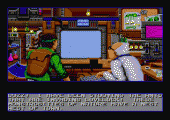
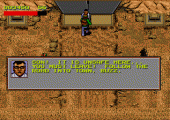
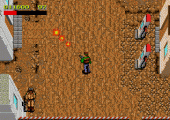
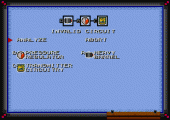
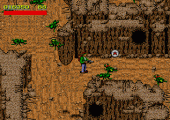
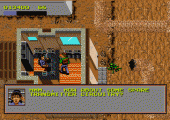
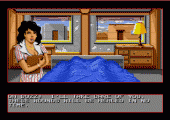
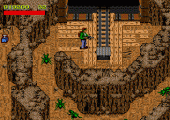
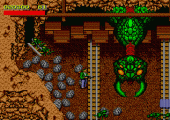
Recent Comments